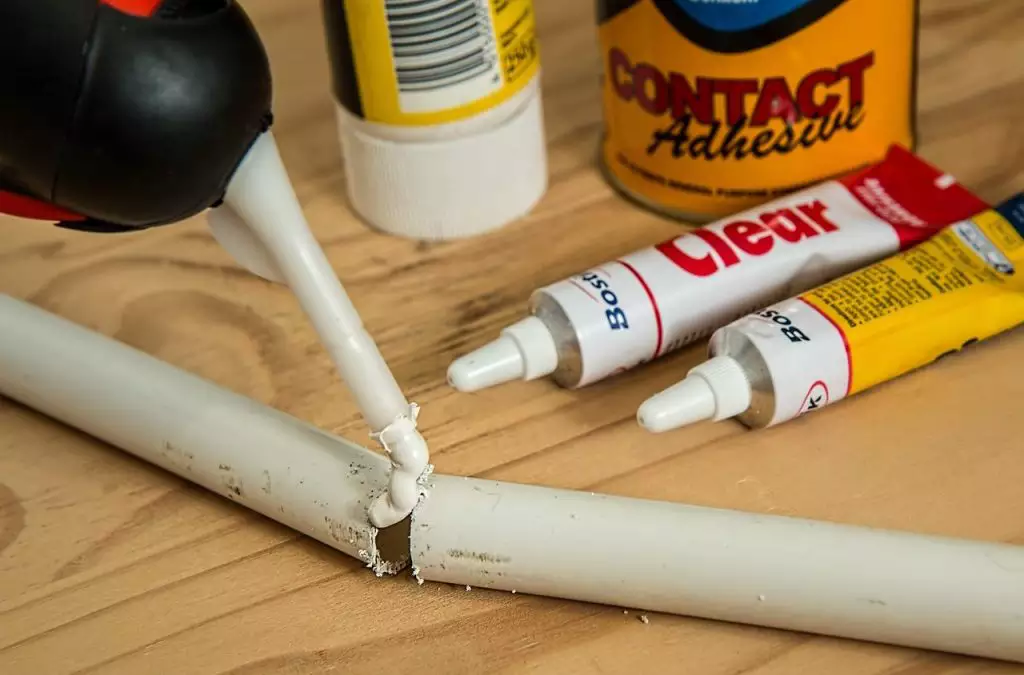
Knowing what type of adhesive to use according to the material is key to achieving good results. After all, every home repair and maintenance task requires certain tools and resources. This time, your Doylestown handyman will explain different types of adhesive for different materials. That way, you can choose the best one when doing your crafts, repairs, and embellishments on any surface.
Wood, cardboard, and paper are the surfaces which are the easiest to adhere to, and they are also among the most common ones. Whether it’s a school project, craft, repair or home makeover, the most suitable adhesive for paper, cardboard and wood is, first and foremost, white glue (vinyl glue).
This particular glue is white when wet, but becomes transparent when dry. Due to its fluid texture, it penetrates well into the pores, and is even used in glass fusing thanks to its high adhesion. It easily dilutes in water and gets pigment from powders and fluids. Excess glue can be removed without too much hassle, either with a scraper or spatula, or with warm water and a clean cloth.
For better use of this adhesive, a uniform layer should be applied on both surfaces; although, in case of cardboard and paper, applying it on one side will suffice. this prevents the vinyl glue from accumulating in sections, as its high water content could affect the surfaces. Brush application can help avoid this. Keep the surfaces close together with weight pressure until the glue is completely dry.
If you’re looking to fix structures made of vinyl, rubber and the like, the best adhesive is elastic putty. Normally, it’s available as a cartridge for applicator/glue gun and has insulating properties.
Depending on the surface that will be adhered to (including wood, glass, ceramics, resins, vinyl, rubber or others) there’s more adhesive for different materials and purposes. So, you can opt for polyurethane, silicone or synthetic rubber. The base is a viscous or pasty material, capable of gluing surfaces with different textures. These are resistant to high and low temperatures, as well as ultraviolet rays, which makes them ideal for outdoors too. What’s more, they don’t harden at all, but remain firm and flexible at the same time.
These less porous surfaces require special glues. Among the most suitable adhesives for bonding glass, porcelain and metal are epoxy and contact cement. You must be careful when using these because they can be dangerous upon contact with skin or mucous membranes.
Once dry, this glue is resistant to moisture and high temperatures, although not as well at extremely low temperatures. You should apply it on both surfaces, in equal portions, and aerate it a little before adhering completely. You can clean the excess with solvents, or physical scraping (scraper, sandpaper).
If you wish to achieve the best results for your home repair or craft project, you need to use the best adhesive for different materials. Also, remain careful and patient. In case DIYs and repairs are not your strong point, don’t hesitate to get in touch with us at ifixit. Call for your local Doylestown handyman for whatever you need to be done around your home.
Don’t hesitate to give us a call, Contact iFixit for any kind of home repair and/or maintenance task.


Contact Number
(215) 715 - 3415
Email Address
[email protected]
Open on